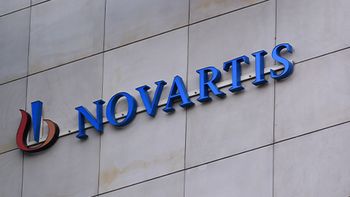
Lessons Learned Working with Millions of Patients on Specialty Medications
Additional assistance necessary for patients prescribed specialty therapies.
The number of people needing specialty medications has risen significantly in the last several years, and these patients are struggling. Having a chronic or life-altering condition is hard, scary and painful.
Let’s look at the patient’s experience. When they are prescribed a specialty therapy, it is often after months or even years of experiencing symptoms. Going from specialist to specialist, they feel despair and confusion about what, if anything, will actually help. When at last they find a healthcare provider (HCP) who delivers a diagnosis and prescribes a medication, they finally do feel hope.
But here’s what we have learned providing patient support services for millions of patients on specialty medications. Even after getting the right medication, there are still many roadblocks for patients in our current healthcare system. In some ways their journey is just beginning. They need help understanding exactly how to get on a specialty treatment, help understanding the cost, and a support system for ongoing questions that arise with the use of a new medication.
Patients tend to believe they can rely on their healthcare provider’s office for all this, but that’s not always possible. What we know from our proprietary research1 conducted last year is that specialty providers’ offices are extremely busy and often understaffed for patient support—even though they do care deeply about patients’ success.
Across our qualitative research and subsequent analysis, three themes became overwhelmingly clear about the relationship between these providers and the specialty medication patients they serve:
1. Patients needed and wanted information that their HCP offices were not able to support. Patients wanted their HCPs to help set their expectations at every step and experienced frustrations around the lack of access or response.
Some patients described long wait times to hear back from their doctor (>48 hours) when they had questions about their specialty medicine. They felt HCPs were not responsive and did not reply quickly enough, with feedback escalating into the sentiment that “the provider did not care about the patient’s experience with medication access or education.”
2. Most patients wanted a better understanding of medication cost and benefit coverage. Affordability was a concern, even for patients with low medical costs. The majority of patients said their doctor’s office did not mention anything to them about the cost of the medicine and whether their specialty medicine was covered–which is unfortunately all too common in today’s environment.
Patient’s success with cost and affordability barriers colored their experience with the medication.
- When patients were assisted by their HCP offices, when affordability or insurance issues arose, they considered their treatment successful.
- Patients often learned if a medication was approved or denied by the specialty pharmacy and had to field phone calls and paperwork themselves, resulting in a “treatment interrupted” status until it was resolved.
- If patients had to switch brands due to medication coverage issues, they described feelings of “FOMO,” or fear of missing out. Would that medication their doctor first prescribed be better for them and have fewer side effects than whatever they had to settle for?
3. The healthcare providers could not provide sufficient emotional support when the treatment didn’t work as hoped, was too complex, or the side effects were too pervasive. This group of patients also wanted supportive care and greater understanding, including help with anxiety, depression, and medication compliance challenges.
Patients sometimes give up and never get on therapy because there are too many roadblocks and not enough help. Indeed, up to 30 percent of prescriptions are never filled and approximately 50 percent of chronic disease medications are not taken as prescribed.2 And as an ever-increasing number of specialty medications come to market, the risk of non-adherence only continues to grow.
While unhelpful provider offices are a common cause of abandonment, this isn’t the providers’ fault. Their offices are overwhelmed by the numerous administrative burdens payers have introduced over the years. While people working in those offices hate disappointing patients, they often have no choice due to the daily realities of their practice.
Getting patients the help they need without requiring provider offices to do a lot of work is critical. It is important that HCPs know about–and more importantly, use–whatever microsite, portal, widget, app or chatbot a pharmaceutical manufacturer provides to help alleviate their administrative burdens.
Reach patients when and where they want. Mobile apps and SMS communications in particular can be powerful tools for overcoming adherence barriers. Outreach that is on patients’ terms helps them get their medication faster and guides them through every step. Engagement tools that patients can own and use in their natural daily flow empowers them to become actively involved in managing their own care, leading to improved adherence.
Non-commercial pharmacies boost intake and adherence
From a patient services perspective, this is where the non-commercial pharmacy (NCP) could be very useful. Commonly known as distribution channels for free products, NCPs have the power to streamline the enrollment process, helping decrease provider burdens and ultimately helping patients get on therapy faster.
Non-commercial pharmacies function as a virtual holding area for specialty medication prescriptions while the benefit verifications, prior authorizations (PAs), co-pay program enrollment and other fulfillment needs are handled and completed in the background. Once these processes and hurdles have been cleared for each patient, their prescription is promptly forwarded to a dispensing pharmacy so that it is available to the patient.
There’s upside for both providers and patients. When HCPs regularly select a specific NCP at the point of prescribing, it’s done without leaving their workflow inside the electronic health records (EHR) system. Patient enrollment into the hub occurs automatically so they are now subscribed to communication, financial, and support protocols defined by the manufacturer. Thanks to the NCP, the prescribing process takes seconds instead of minutes because fewer steps are needed to enroll the patient. This translates to extra time focused on the patient that can help strengthen the patient/provider relationship.
In addition, rather than exiting the patient’s EHR and manually filling out a patient enrollment form, the provider selects the NCP to receive the prescription for the drug, just like they would any retail pharmacy at the point of prescribing. Providers don’t need to enter the data because it is already in the EHR, and the relevant information is automatically transferred with the prescription. In-workflow EHR prescribing can give patients access to their medication days or even weeks faster and the time providers would normally have spent dealing with authorizations can now be used where it belongs: with their patients.
Even when everything goes smoothly–the diagnosis is found and treatment prescribed, the copay is covered, the SP is helpful and the medication arrives–at the end of the day it’s the patient, often alone, trying to summon the courage to do something that is painful or unpleasant. Every member of our team, especially our front line call center operators, are aware every day of just how difficult the patient journey can be for patients who require specialty medication. There is no greater personal or professional satisfaction for us than being able to help patients clear these hurdles in order to get and stay on the specialty medications they need to manage their diseases and improve their quality of life.
References
- Speciality Office Qualitative Research conducted by ConnectiveRx, November 2020. Interviewees and participants included healthcare providers, office managers, NPs and Pas in neurology, oncology, and rheumatology.
- Viswanathan M, Golin CE, Jones CD, et al. Interventions to improve adherence to self-administered medications for chronic diseases in the United States: a systematic review. Ann Intern Med. 2012;157(11):785-795.
https://www.ncbi.nlm.nih.gov/pubmed/22964778
Julia Laurin is chief product officer at
Newsletter
Lead with insight with the Pharmaceutical Executive newsletter, featuring strategic analysis, leadership trends, and market intelligence for biopharma decision-makers.





